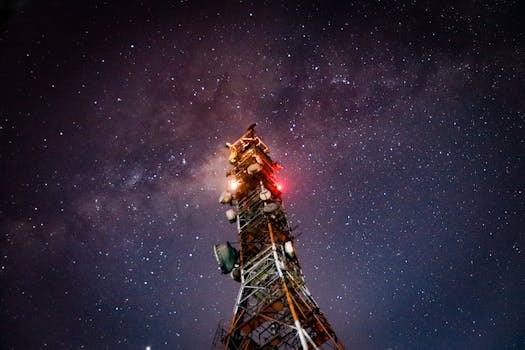Starlink: Revolutionizing Global Internet Connectivity with Satellite Technology – Starlink

Starlink: Revolutionizing Global Internet Connectivity with Satellite Technology – Starlink
Starlink, the focus keyword, is a satellite constellation developed by SpaceX, a private aerospace manufacturer and space transport services company founded by Elon Musk. The primary objective of Starlink is to provide high-speed, low-latency internet connectivity worldwide, bridging the digital divide and transforming the way we communicate. With the launch of its first satellites in 2019, Starlink has been steadily expanding its constellation, with thousands of satellites already in orbit and many more planned for the future.
The concept of Starlink was first announced in 2015, with the goal of creating a network of low-Earth orbit (LEO) satellites that could provide fast and reliable internet access to anyone, anywhere in the world. The satellites are designed to operate at an altitude of around 550 kilometers, which is much lower than traditional geostationary satellites. This lower altitude enables Starlink to offer faster internet speeds and lower latency, making it suitable for a wide range of applications, including online gaming, video streaming, and remote work.
How Starlink Works
Starlink uses a constellation of small satellites, each weighing around 227 kilograms, to provide internet connectivity. The satellites are equipped with advanced technology, including Hall effect thrusters, which enable them to maintain their position and altitude in orbit. The satellites communicate with each other and with ground stations using laser links, which provide high-speed data transfer and minimize latency.
When a user sends a request for internet access, the signal is transmitted to the nearest Starlink satellite, which then forwards the signal to the destination server. The response from the server is then sent back to the user through the same satellite, providing a fast and seamless internet experience. Starlink also uses advanced beamforming technology, which allows the satellites to focus their signals on specific areas, increasing the efficiency and capacity of the network.
Benefits and Applications of Starlink
Starlink has the potential to revolutionize the way we communicate and access information. One of the most significant benefits of Starlink is its ability to provide internet access to remote and underserved communities, where traditional infrastructure is limited or non-existent. This can help bridge the digital divide, enabling people in these areas to access essential services, such as education, healthcare, and finance.
Starlink can also provide backup internet connectivity during natural disasters or outages, ensuring that critical communications and services remain available. Additionally, Starlink can support a wide range of applications, including online gaming, video streaming, and remote work, making it an attractive option for consumers and businesses alike.
Challenges and Controversies Surrounding Starlink
While Starlink has the potential to transform the way we communicate, it also raises several challenges and controversies. One of the main concerns is the impact of Starlink on the environment, particularly in terms of space debris and light pollution. The launch of thousands of satellites into orbit has raised concerns about the potential for collisions and the creation of debris, which can harm other satellites and spacecraft.
Another controversy surrounding Starlink is the issue of spectrum allocation and interference. Starlink operates in the Ku and Ka frequency bands, which are also used by other satellite and terrestrial systems. This has raised concerns about potential interference and the need for careful spectrum management to ensure that Starlink does not disrupt other services.
In conclusion, Starlink is a revolutionary satellite constellation that has the potential to transform the way we communicate and access information. With its high-speed, low-latency internet connectivity, Starlink can provide backup internet connectivity during natural disasters or outages, support a wide range of applications, and bridge the digital divide. However, it also raises several challenges and controversies, including the impact on the environment, spectrum allocation, and interference. As Starlink continues to expand its constellation and provide internet access to more people around the world, it is essential to address these challenges and ensure that the benefits of Starlink are realized while minimizing its negative impacts.




